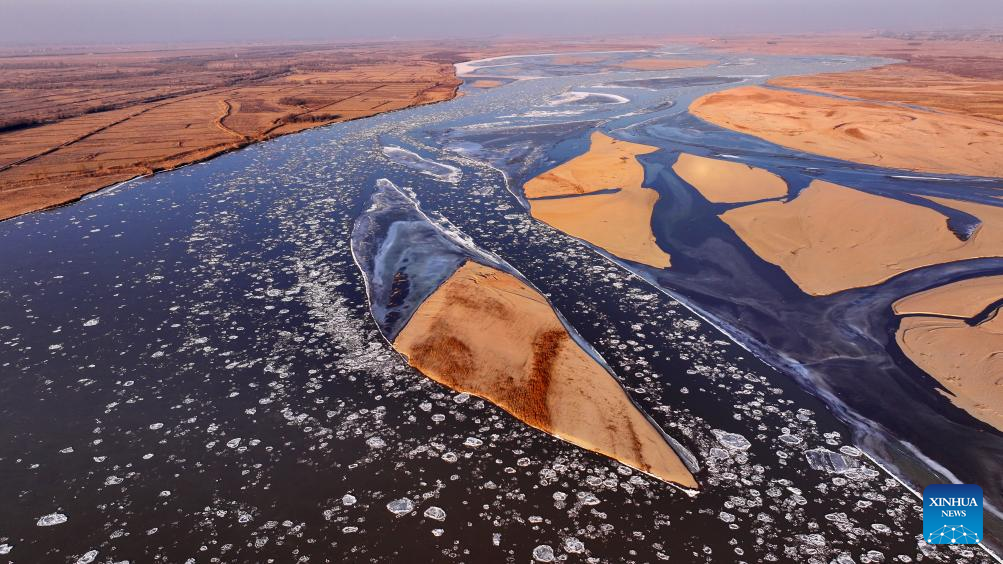
This aerial photo taken on Dec. 24, 2023 shows the flowing ice on the Yellow River in northwest China\’s Ningxia Hui Autonomous Region. The flows are a common occurrence on the Yellow River when changing temperatures cause freezes and thaws. The 5,464-km-long Yellow River is the second longest river in China. It originates from the Qinghai-Tibet Plateau and runs through the Loess Plateau. (Xinhua/Wang Peng)

This aerial photo taken on Dec. 24, 2023 shows the flowing ice on the Yellow River in northwest China\’s Ningxia Hui Autonomous Region. The flows are a common occurrence on the Yellow River when changing temperatures cause freezes and thaws. The 5,464-km-long Yellow River is the second longest river in China. It originates from the Qinghai-Tibet Plateau and runs through the Loess Plateau. (Xinhua/Wang Peng)

This aerial photo taken on Dec. 24, 2023 shows the flowing ice on the Yellow River in northwest China\’s Ningxia Hui Autonomous Region. The flows are a common occurrence on the Yellow River when changing temperatures cause freezes and thaws. The 5,464-km-long Yellow River is the second longest river in China. It originates from the Qinghai-Tibet Plateau and runs through the Loess Plateau. (Xinhua/Wang Peng)
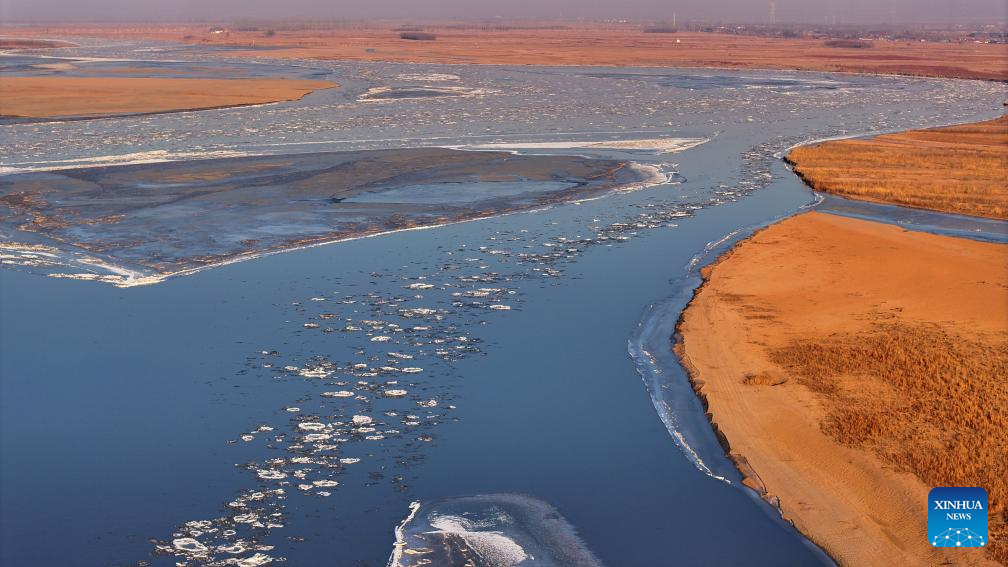
This aerial photo taken on Dec. 24, 2023 shows the flowing ice on the Yellow River in northwest China\’s Ningxia Hui Autonomous Region. The flows are a common occurrence on the Yellow River when changing temperatures cause freezes and thaws. The 5,464-km-long Yellow River is the second longest river in China. It originates from the Qinghai-Tibet Plateau and runs through the Loess Plateau. (Xinhua/Wang Peng)
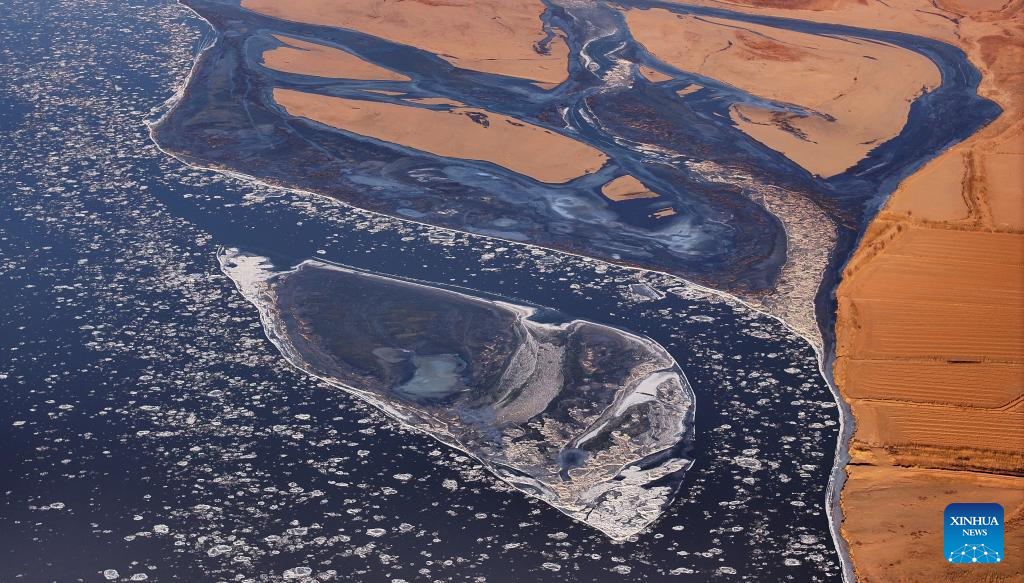
This aerial photo taken on Dec. 24, 2023 shows the flowing ice on the Yellow River in northwest China\’s Ningxia Hui Autonomous Region. The flows are a common occurrence on the Yellow River when changing temperatures cause freezes and thaws. The 5,464-km-long Yellow River is the second longest river in China. It originates from the Qinghai-Tibet Plateau and runs through the Loess Plateau. (Xinhua/Wang Peng)

This aerial photo taken on Dec. 24, 2023 shows the flowing ice on the Yellow River in northwest China\’s Ningxia Hui Autonomous Region. The flows are a common occurrence on the Yellow River when changing temperatures cause freezes and thaws. The 5,464-km-long Yellow River is the second longest river in China. It originates from the Qinghai-Tibet Plateau and runs through the Loess Plateau. (Xinhua/Wang Peng)
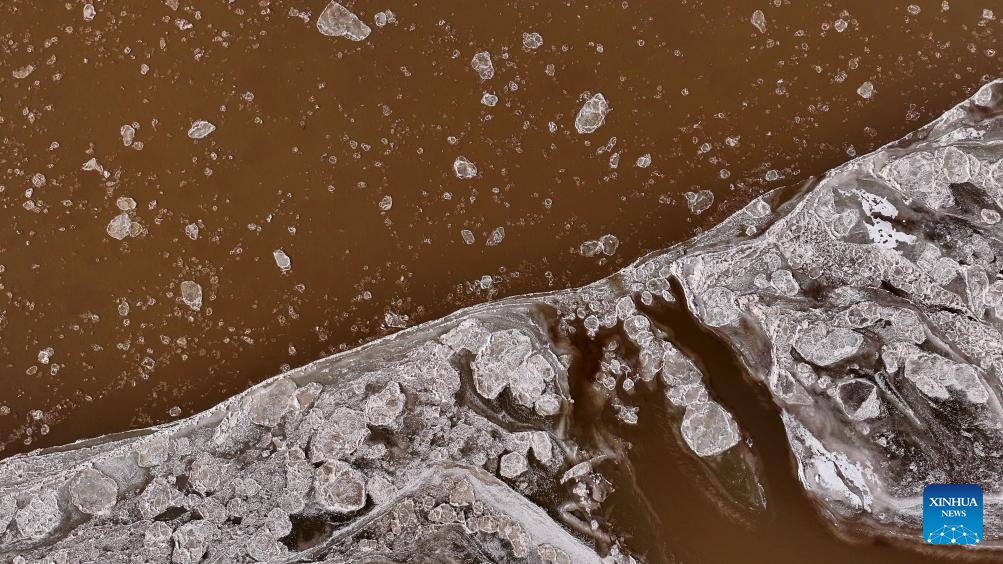
This aerial photo taken on Dec. 24, 2023 shows the flowing ice on the Yellow River in northwest China\’s Ningxia Hui Autonomous Region. The flows are a common occurrence on the Yellow River when changing temperatures cause freezes and thaws. The 5,464-km-long Yellow River is the second longest river in China. It originates from the Qinghai-Tibet Plateau and runs through the Loess Plateau. (Xinhua/Wang Peng)
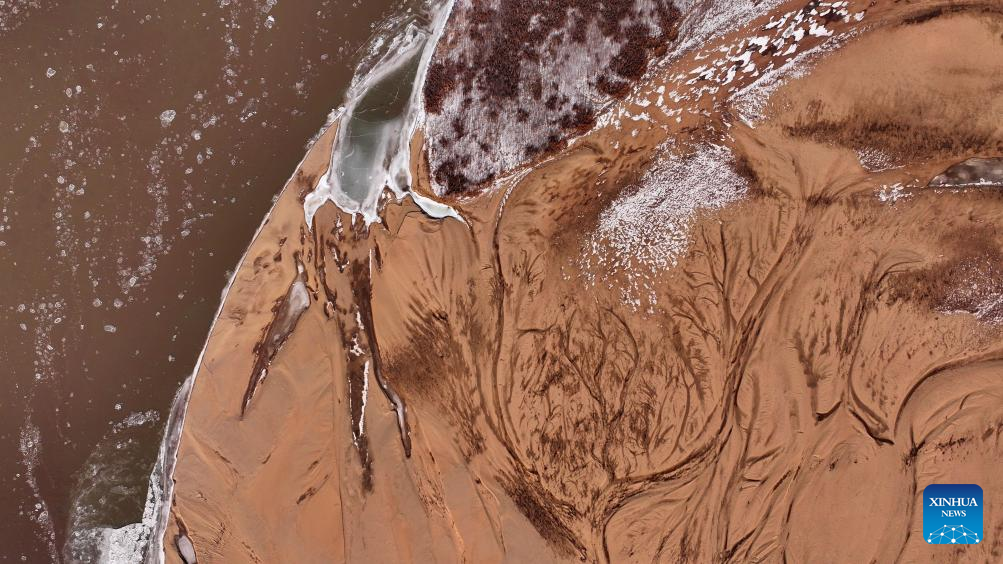
This aerial photo taken on Dec. 24, 2023 shows the flowing ice on the Yellow River in northwest China\’s Ningxia Hui Autonomous Region. The flows are a common occurrence on the Yellow River when changing temperatures cause freezes and thaws. The 5,464-km-long Yellow River is the second longest river in China. It originates from the Qinghai-Tibet Plateau and runs through the Loess Plateau. (Xinhua/Wang Peng)

This aerial photo taken on Dec. 24, 2023 shows the flowing ice on the Yellow River in northwest China\’s Ningxia Hui Autonomous Region. The flows are a common occurrence on the Yellow River when changing temperatures cause freezes and thaws. The 5,464-km-long Yellow River is the second longest river in China. It originates from the Qinghai-Tibet Plateau and runs through the Loess Plateau. (Xinhua/Wang Peng)
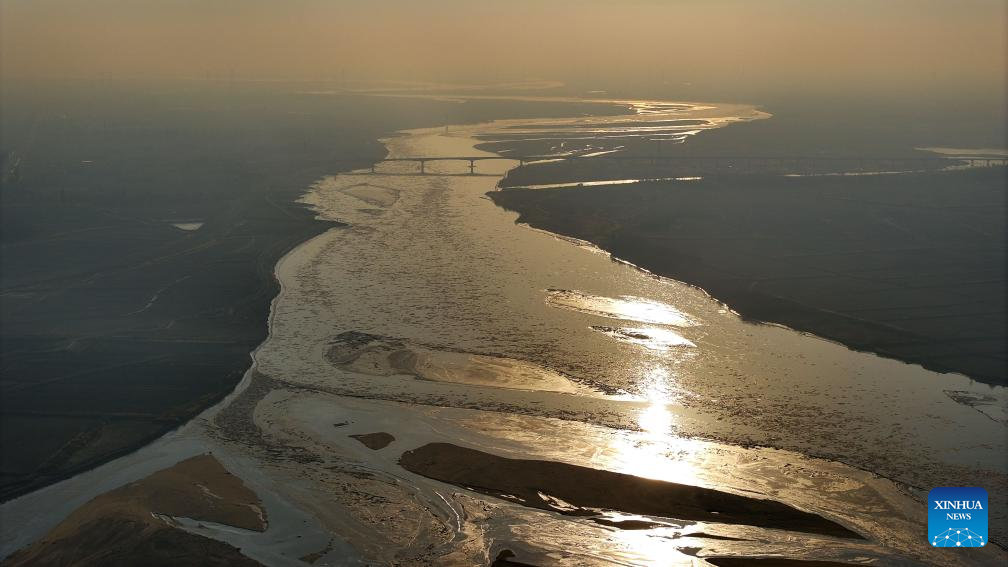
This aerial photo taken on Dec. 24, 2023 shows the flowing ice on the Yellow River in northwest China\’s Ningxia Hui Autonomous Region. The flows are a common occurrence on the Yellow River when changing temperatures cause freezes and thaws. The 5,464-km-long Yellow River is the second longest river in China. It originates from the Qinghai-Tibet Plateau and runs through the Loess Plateau. (Xinhua/Wang Peng)
